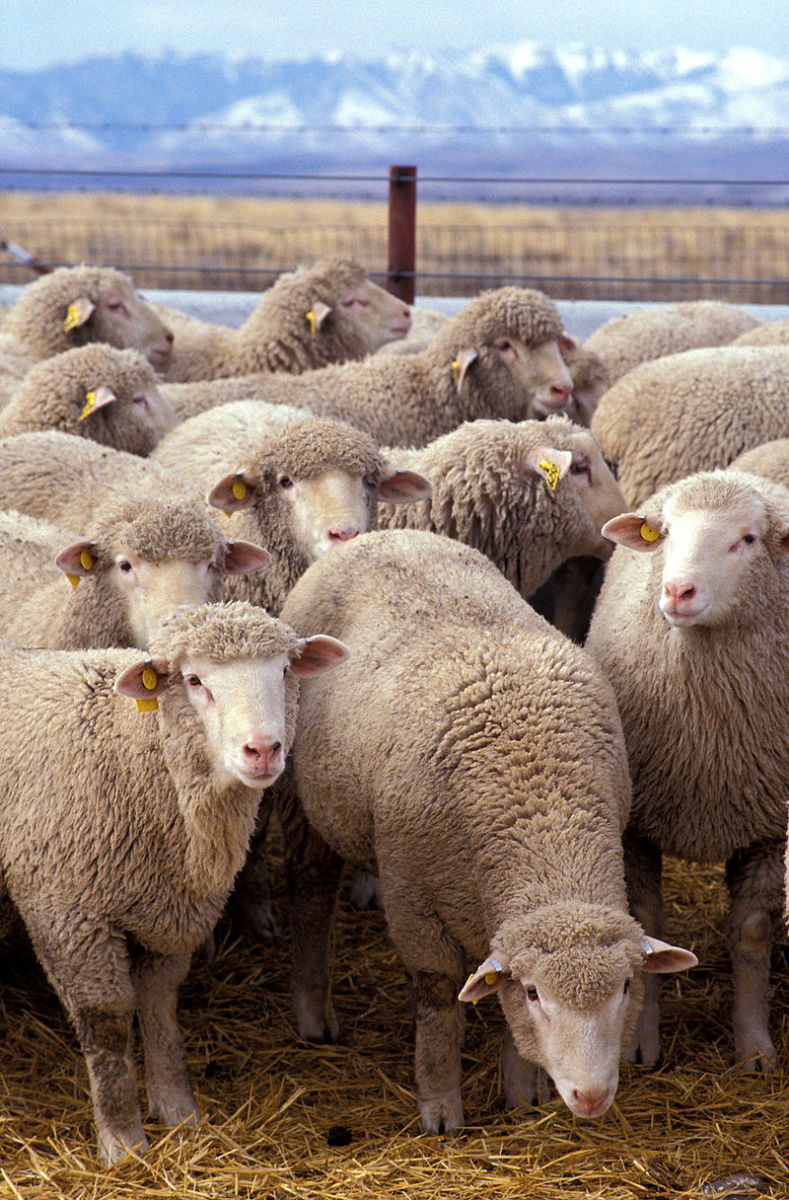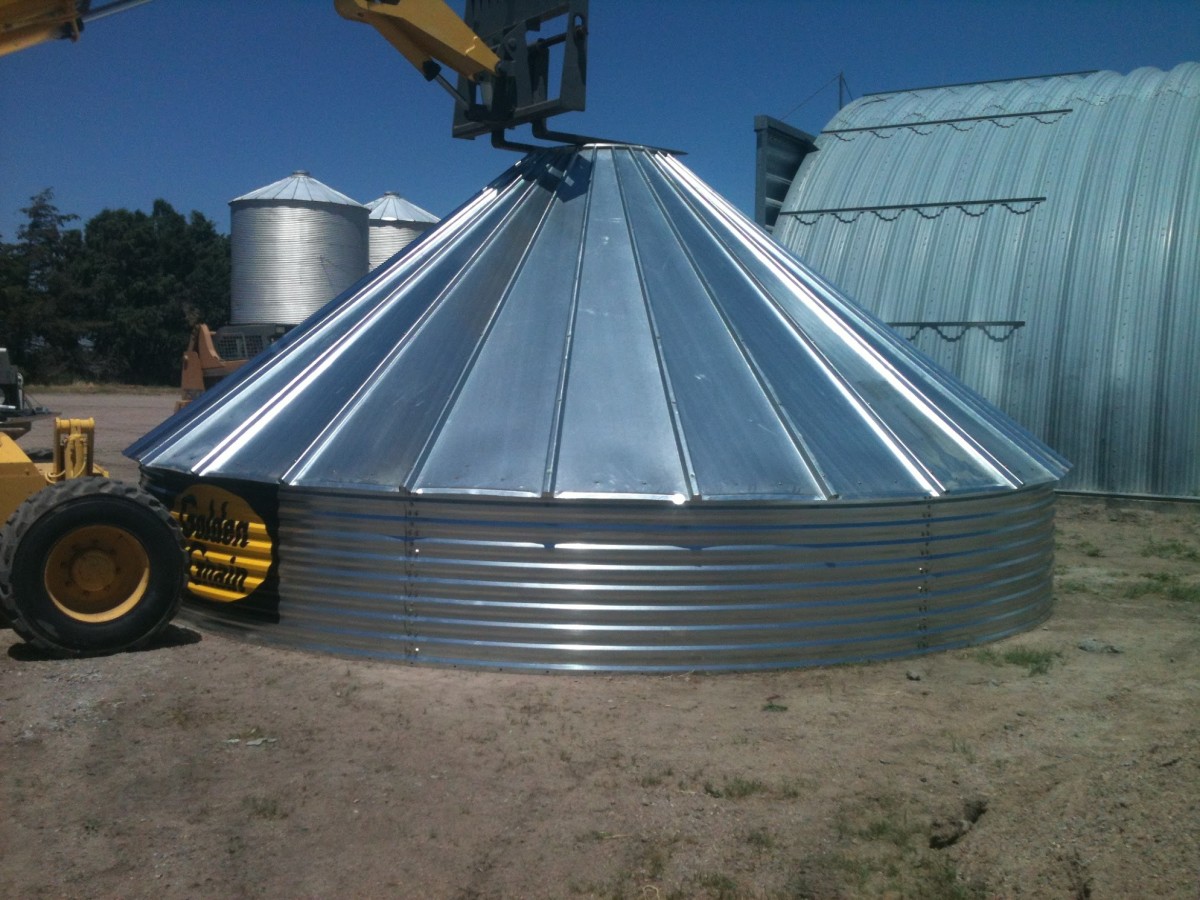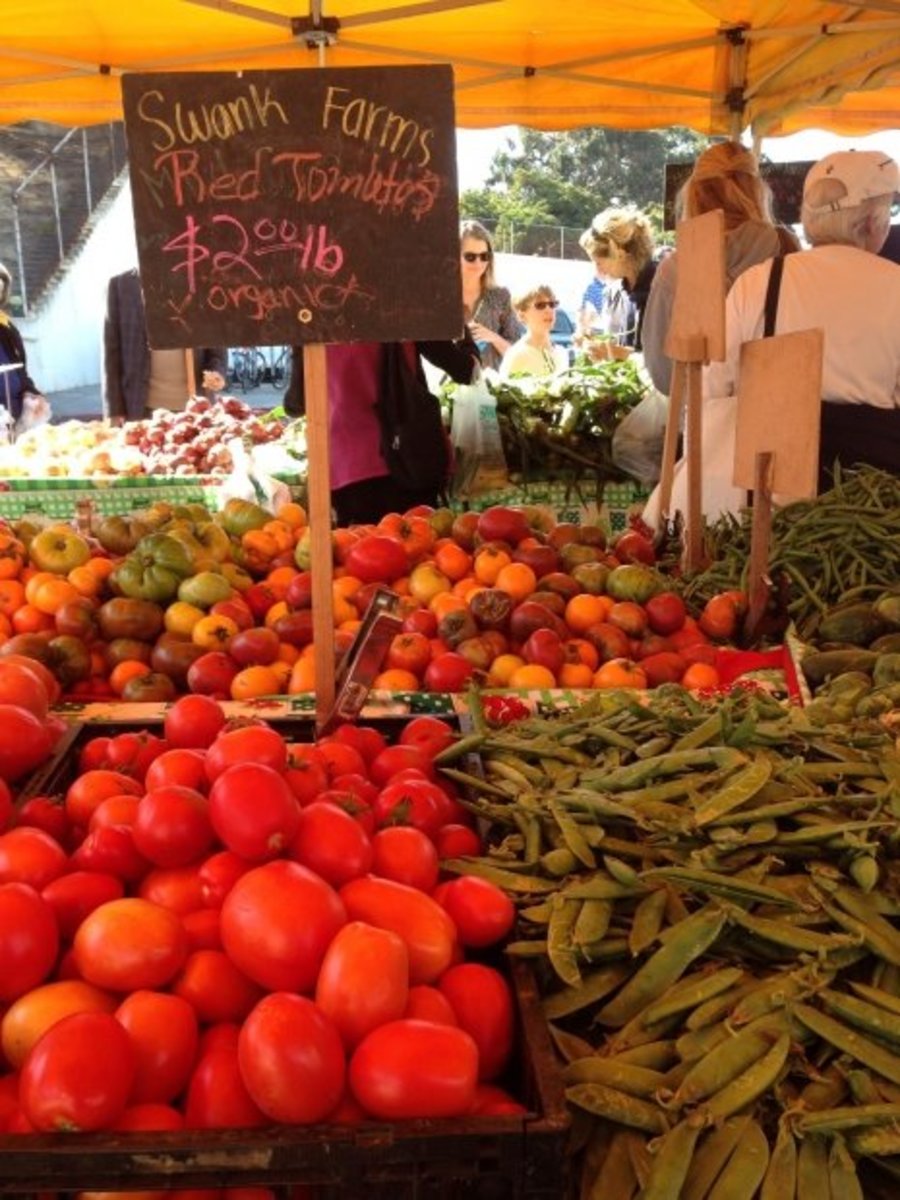Wheat Harvest on a Colorado Farm, July 2009: Photos and Story Detailing What Happens
The Main Equipment
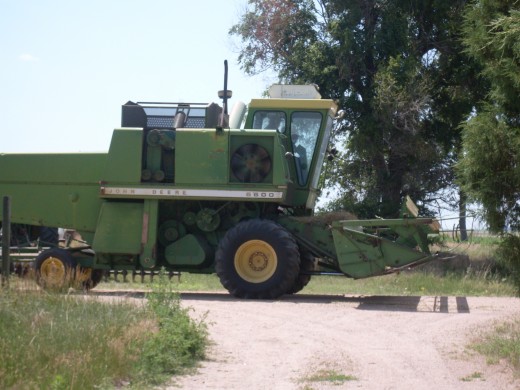
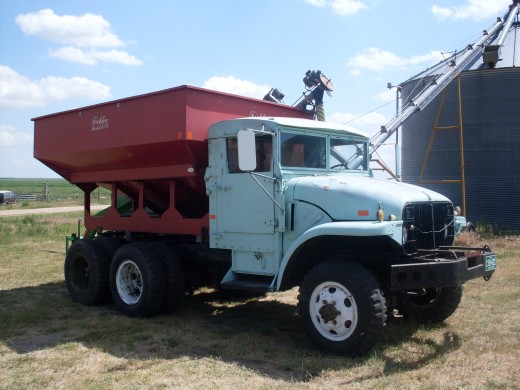
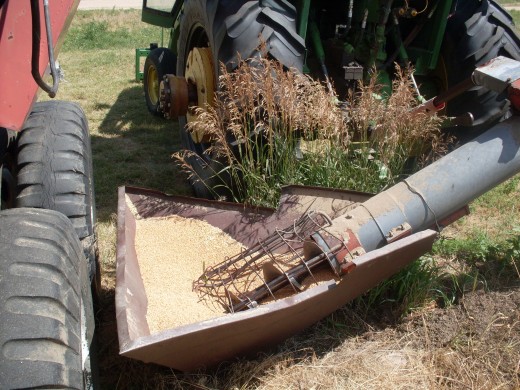
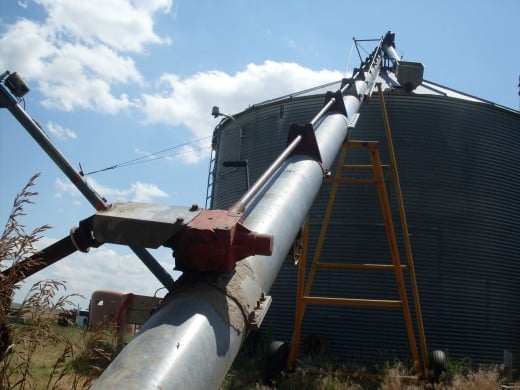
A Peek at Wheat Harvest
Wheat has always been a crop on this farm, which was homesteaded by my Great-Grandpa near the turn of the century. He was an innovative man, always ready to experiment with new ideas and equipment, so I can tell few stories about his use of horses. He was, in fact, one of the first men in this area to acquire a gas tractor (an Avery, perhaps?), which he had shipped in by train to the nearest town, 12 miles away.
I don't know exactly what wheat harvest was like for him. Though there never was a threshing floor built on this farm, and flails were never used to beat the wheat from out of the heads, I know the task was not easy. I am sure that by the time he handed the farm over to his son, it seemed farming had come a long way. And it had.
Now, it seems sometimes that the progress has stalled. My Dad is using equipment which is the same era as Grandpa's. The tractor and combine are both 1971 models, and though small by today's standards, they continue to do their jobs well.
Wheat harvest usually only lasts about three days. Dad harvested 100 acres of wheat this year. This is not much, by Western United States standards, but is as much as the land will accommodate and stay healthy, leaving room for proper crop rotation, and resting of the ground.
The yield per acre this year was very good. The wheat was grown organically, in a type of ground called blow sand, where 20 bushels to the acre is the norm. Blow sand is very dry and loose, which makes it difficult to build up a good topsoil, and forces the plants to push their roots deep if they want to live and find water. But this year we averaged 38 bushels to the acre!
Dad chose not to haul the wheat to the farmer's cooperative elevator in town, yet...he's waiting for a better price on wheat. I've no doubt he'll get it, too, and ride the wave of price adjustments with skill.
This is something most farmers must be good at, or their farms perish.
I'll show you now how harvest is done on Dad's farm.
In the Field
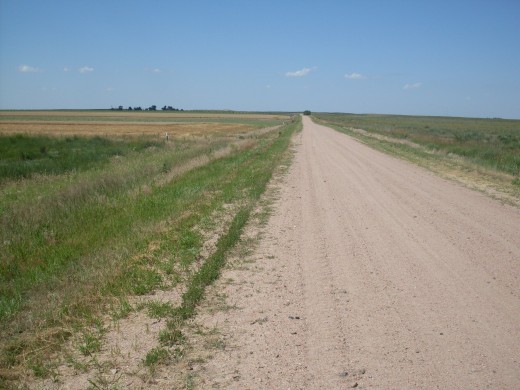
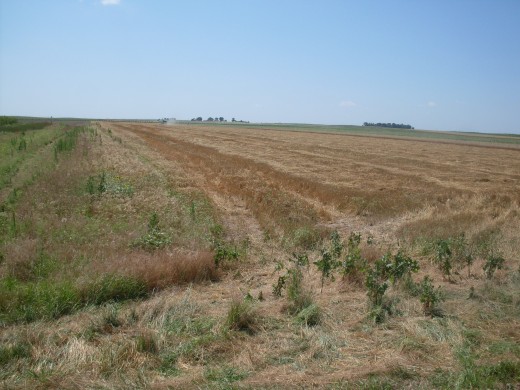
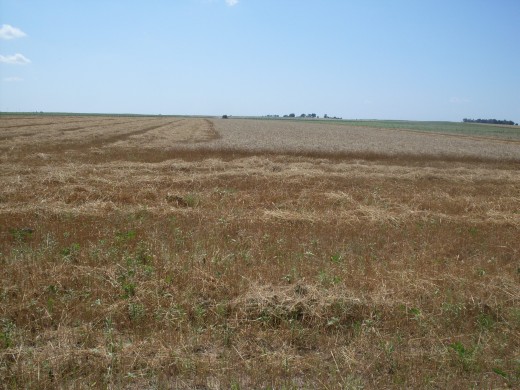
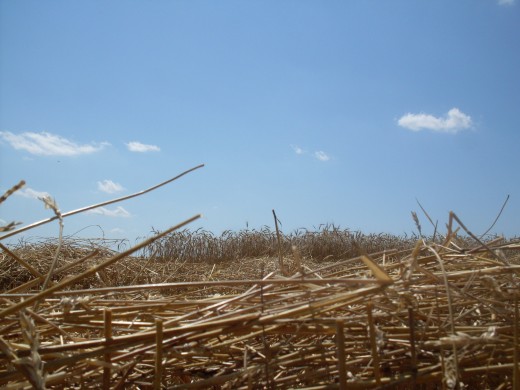
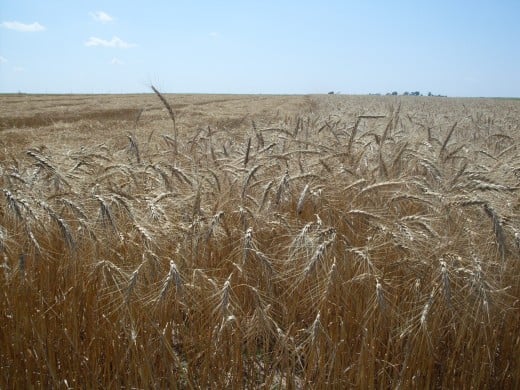
The Combine
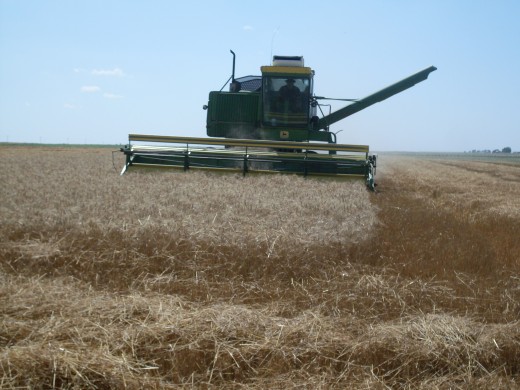
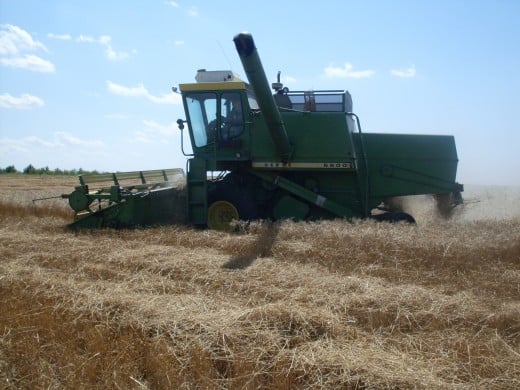
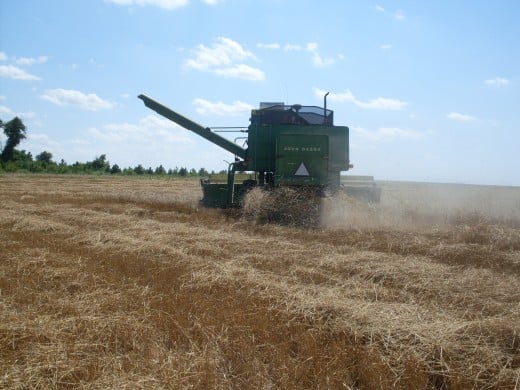
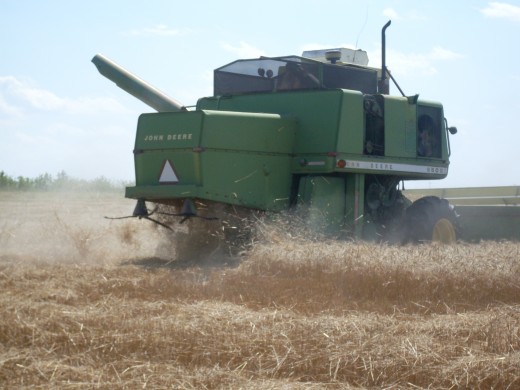
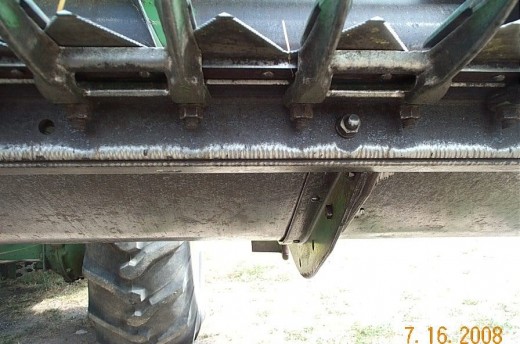
On the Combine
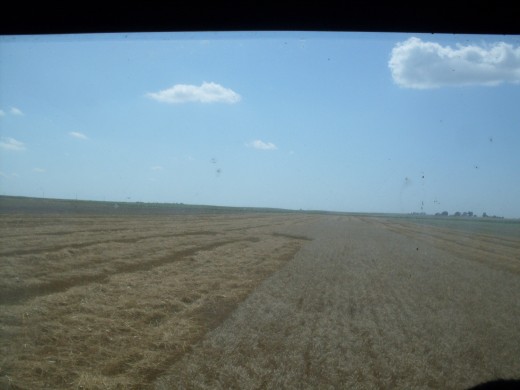
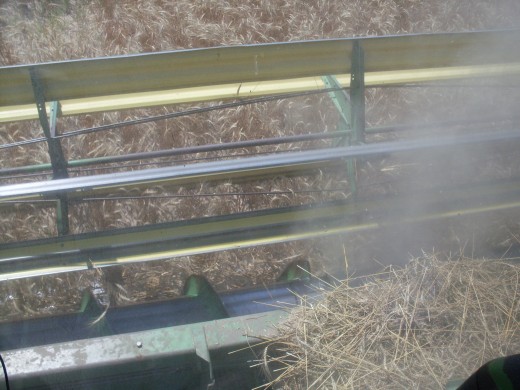
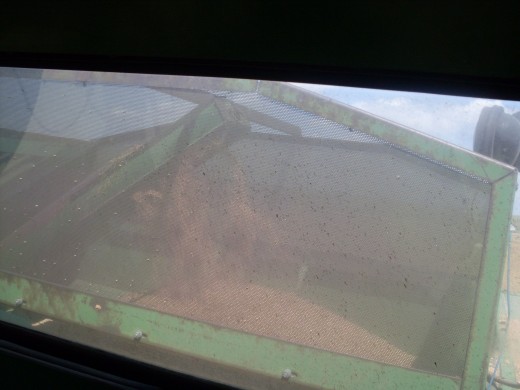
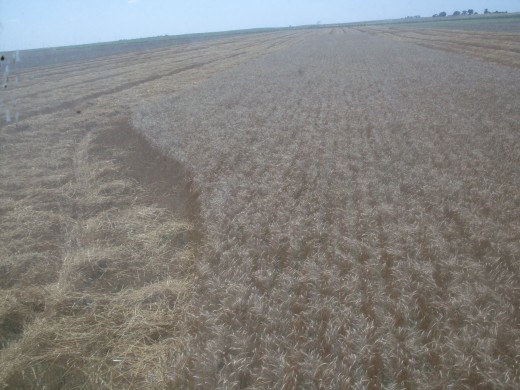
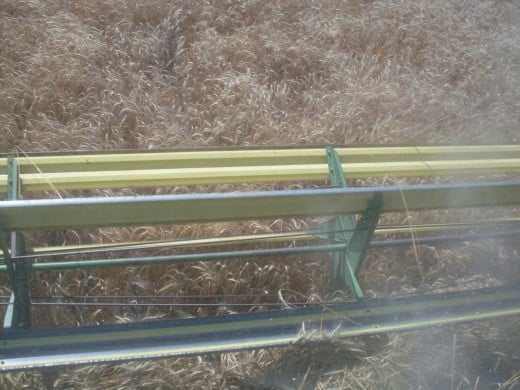
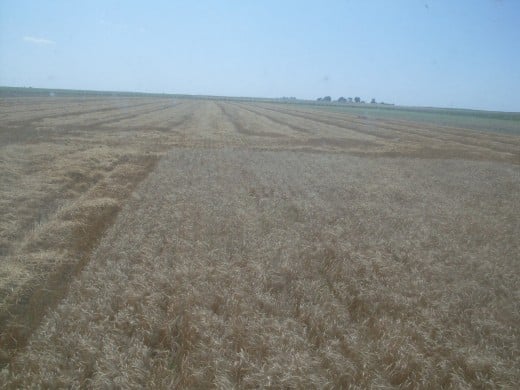
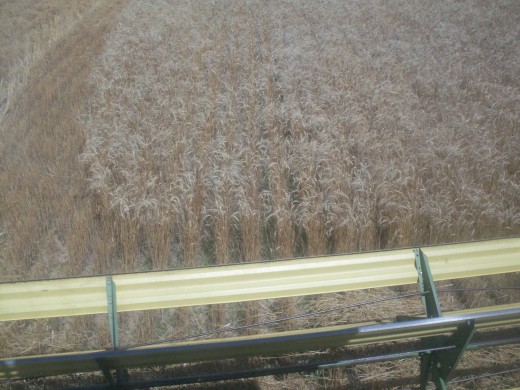
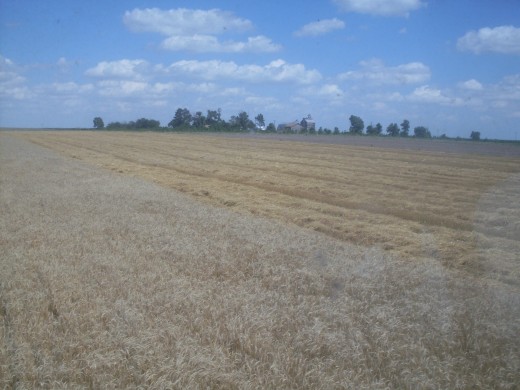
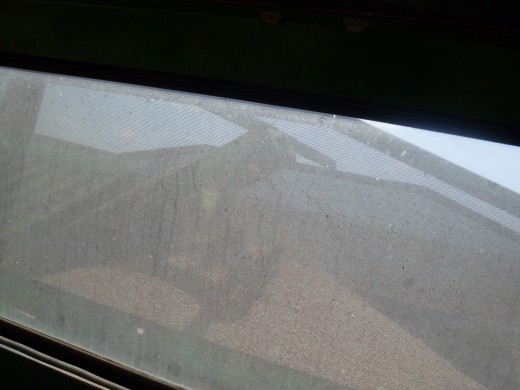
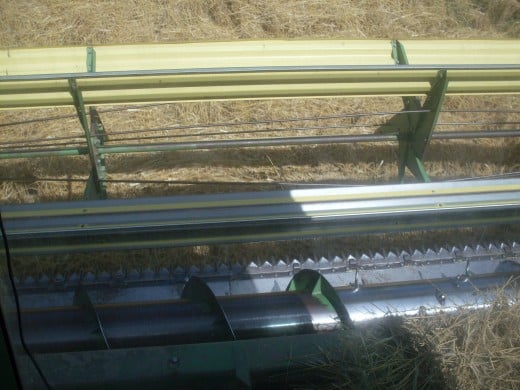
Unloading Combine and Truck, Loading Bin
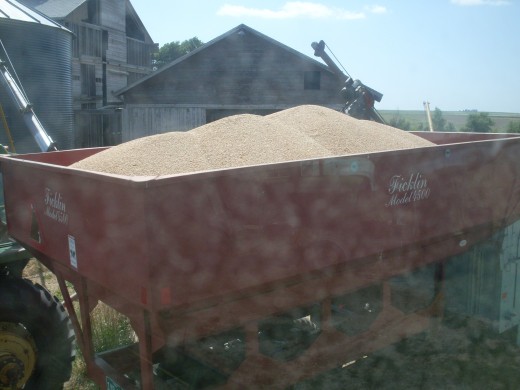
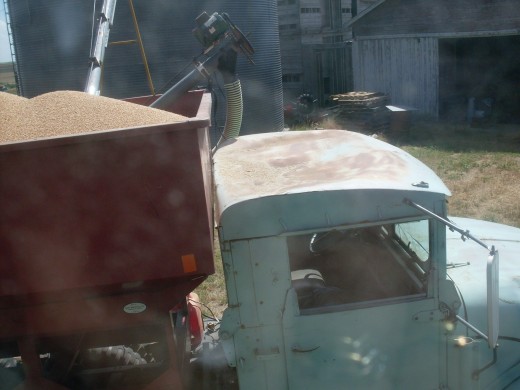
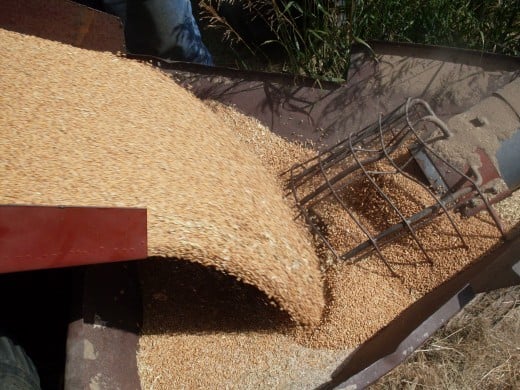
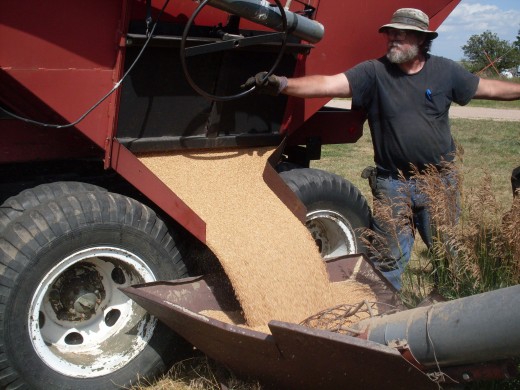
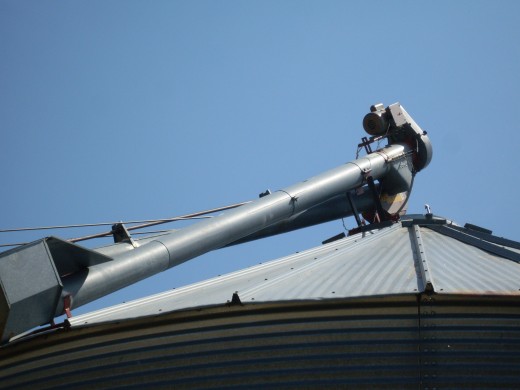


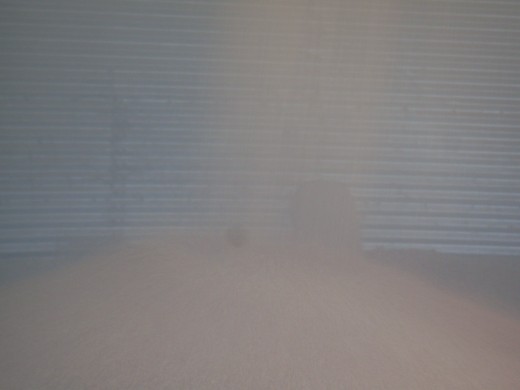
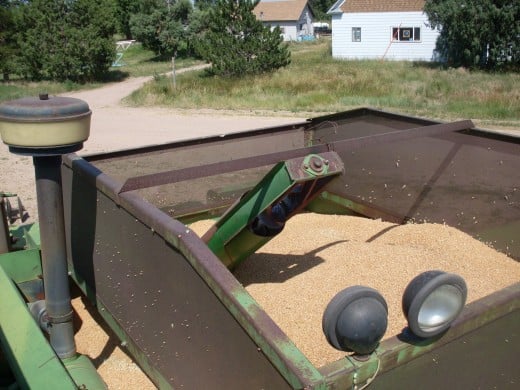
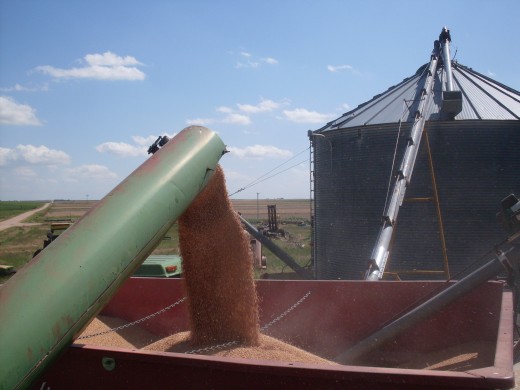
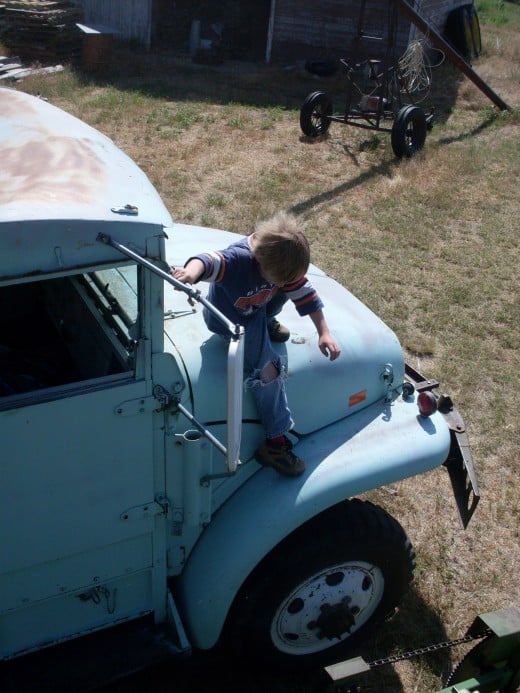
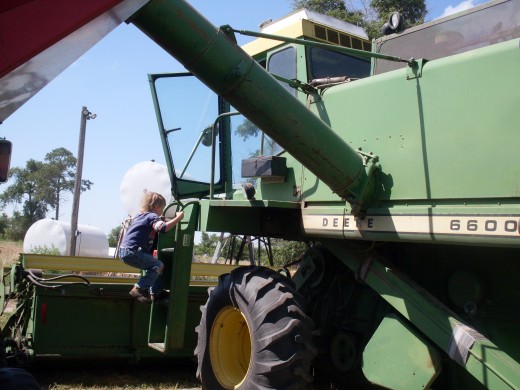
A Wheat Harvest in Motion
© 2009 Joilene Rasmussen




